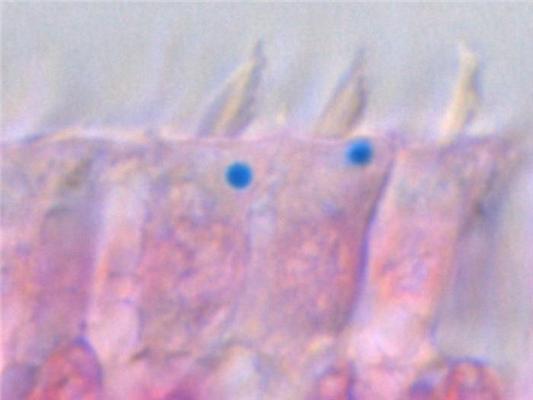
Iron Balls in Bird Brains May Sense Magnetic Fields

On "probably the most exciting day" of David Keays' life, his research team found microscopic iron balls in the thinly sliced neurons of a pigeon's inner ear. For four years, Keays' team had been searching for the cellular receptor that allows birds to sense magnetic fields. This ability allows some birds to migrate thousands of miles, but no scientist has definitively found the anatomical structure responsible.
In May of last year, however, a study published in the journal Science suggested that pigeons sense magnetic fields with neurons in their inner ears. So Keays, of the Research Institute of Molecular Pathology in Vienna, and his colleagues looked in this region, and all of the sudden, they struck iron. (Keays' team was looking for this metal since it's one of the few substances in the body that is magnetic.)
"As far as we know, they are the only iron-rich sensory neurons that have been described … and this is why it's such an exciting discovery," Keays told LiveScience.
These iron-containing membranes were found inside so-called "hair cells," which play a role in hearing and sensing movement and acceleration. So far, it's unclear exactly what they do, although Keays said the iron-imbued neurons are the most promising candidates for explaining birds' ability to sense Earth's magnetic field.
"I wouldn't say we've solved the puzzle," Keays said. "I would say we have another piece. However, if it does act as a magnetic receptor, it's probably in the right cells and right place." So far these iron-filled receptors appear to exist in every species of bird surveyed, he added.
David Dickman is a neuroscientist at the Baylor College of Medicine who co-authored the 2012 Science paper that found that cells in pigeons' inner ears sense magnetic fields. The fact that these iron "balls" are in the inner ear is fascinating, and it'll be exciting if they turn out to be involved in sensing magnetic fields, said Dickman, who wasn't in involved in this study, which was published online April 25 in the journal Current Biology.
The receptors could also possibly be used to enhance birds' ability to hear low-frequency sounds, or store iron for some as-yet-unknown purpose, Dickman said.
Sign up for the Live Science daily newsletter now
Get the world’s most fascinating discoveries delivered straight to your inbox.
Email Douglas Main or follow him @Douglas_Main. Follow us @OAPlanet, Facebook or Google+. Original article on LiveScience's OurAmazingPlanet.










